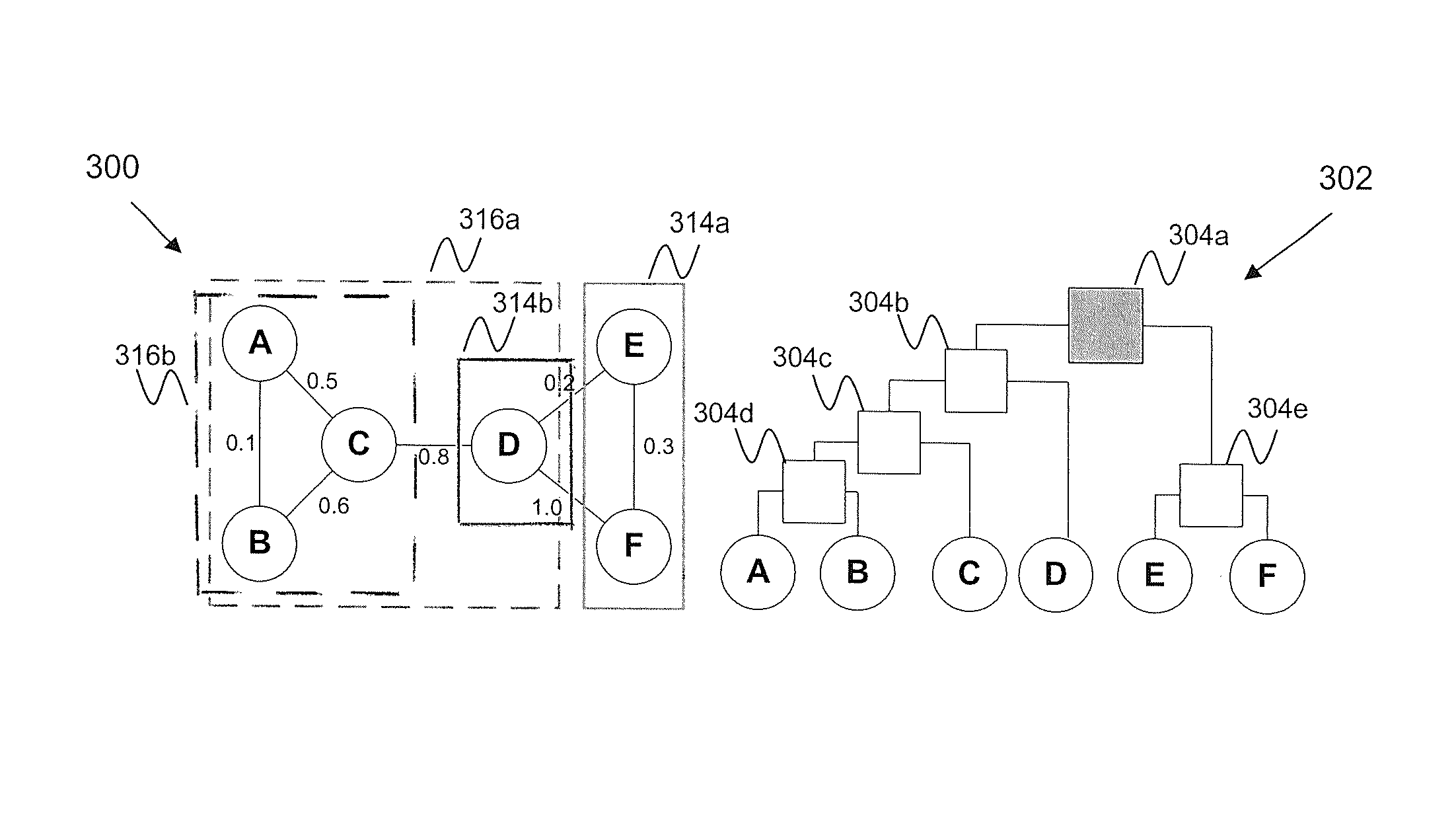System and method for modeling and analyzing data via hierarchical random graphs
a hierarchical random graph and data technology, applied in the field of hierarchical random graph system and method, can solve the problems of limited application of hrg algorithm to an extremely small subset of network science, network disorganization and difficult interpretation, and insufficient application of traditional “all or nothing” hrg
- Summary
- Abstract
- Description
- Claims
- Application Information
AI Technical Summary
Benefits of technology
Problems solved by technology
Method used
Image
Examples
Embodiment Construction
[0035]An embodiment of the present invention is directed to a system and method for data mining via hierarchical random graphs. For example, the hierarchical random graphs allow for clustering and analyzing of unorganized, sometimes disparate, network data. Embodiments of the present invention allow the analysis of different types of connectivity between nodes in such an organized network that cannot or should not be characterized as all or none, but rather, characterized with a degree of connectivity. When such analysis is extended to a multi-layered network that models entity relations between multiple network layers, a hierarchical community structure with mixed membership can be recovered which would not be recovered by separate analysis of single-layered networks. The structure is recovered in the sense that it existed in the real-world environment, and that structure is now discovered by analyzing the data.
[0036]An embodiment of the present invention extends the algorithm empl...
PUM
 Login to View More
Login to View More Abstract
Description
Claims
Application Information
 Login to View More
Login to View More - R&D
- Intellectual Property
- Life Sciences
- Materials
- Tech Scout
- Unparalleled Data Quality
- Higher Quality Content
- 60% Fewer Hallucinations
Browse by: Latest US Patents, China's latest patents, Technical Efficacy Thesaurus, Application Domain, Technology Topic, Popular Technical Reports.
© 2025 PatSnap. All rights reserved.Legal|Privacy policy|Modern Slavery Act Transparency Statement|Sitemap|About US| Contact US: help@patsnap.com



